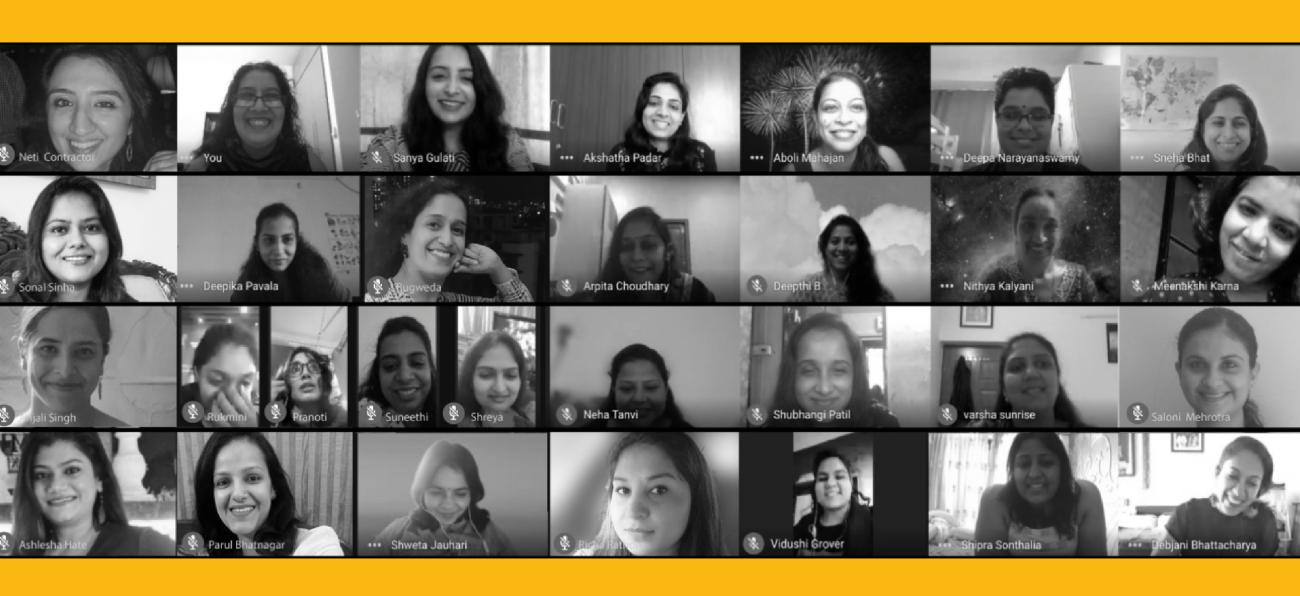Hiring good talent is a battle, retaining them another one entirely.
Both have become increasingly fierce in today’s landscape where people with proven abilities and demonstrable skills are calling the shots.
How then do small and unfunded or relatively lower-funded businesses hire and retain good talent?
There is no easy answer, and it likely will be a collection of aspects, but in this article I will speak of what makes it work for us at FlexiBees.
Oh, and it does work for us. We now have a team of 40+ people, and over the years we have lost fewer people than we can count on the fingers of both hands.
Here are some things we think that make it work for us.
Hiring from an untapped Talent pool
We hire from our own pool of women professionals, most of them mothers, most of them careers returnees, and all of them wanting to build flexible careers.
It is core to our vision, but apart from that, it brings us many other benefits too
-
Sheer availability: From the basic demand-supply standpoint, here is a pool that is qualified, experienced, and keen to work who few businesses, relatively speaking are looking at (that situation has also seen a step change during and after the pandemic as remote work has become more acceptable, there are now many more opportunities for flexi-workers, many of whom are returning women professionals)
-
Work ethic: These are folks who are professionals, having worked in corporates, honed their skills but also developed an ethic around work. Half or more of the talent-side problems today boil down to work ethic, and here is a pool that brings the best to the table. They understand workplace communication and protocols, are keen to contribute, and are interested in building long-term careers and relationships
-
Larger hiring pool: The fact that we are a fully remote company and/or are open to hiring remotely, means our hiring pool is that much larger. It is a huge advantage when smaller businesses are competing for talent with lavishly-funded companies in certain over-heated pockets of the country

Results of a study we conducted with businesses, many of whom were clients of ours, about hiring via Flexible Work Arrangements
Flexible culture
While we get a lot from our team, we are also able to give them what they need. And therein is the match.
For our pool of women professionals specifically, and increasingly for a lot of new-age talent, flexibility is an important part of the workplace equation. Talent first and foremost, are people, and people have life needs.
Whether it be in the form of the increasing load of caregiving post-pandemic, seeing yourself as more than the sum total of your work experiences, or investing in your skills for growth, for employers to have the mindset of flexibility in all possible ways is paramount and crucial to retention.
We ourselves are a very flexible company, that manifests not just in us being fully remote and having part-time talent, but also in respecting people’s life needs, be it a sudden short illness, a prolonged caregiving situation, a week-long vacation or a 3 month long sabbatical. It is our strong belief that the organization needs to adjust to the needs of its people and not the other way around.
How we do this
This is more simply achieved than it sounds; for us it means hiring different people for distinct roles.
One example is that we have different people working for Content and Digital. The former does strategy and writing while the latter manages all paid marketing, tracking of spends and organic content. However they can take over from each other in a crunch. Similarly, we have different content teams for B2C and B2C, a separate graphics person who does the more elaborate graphics and video edits while many people in the content team can use Canva
This of course is easier when you are willing to hire people in part-time roles.
I have had to do a few transitions in my Sales teams over the last few months, and we all know, the stakes are high since these are external facing roles. However I have a system that helps minimize losses to a very high degree. These systems can, and should, be custom designed for the function or company; and it is necessary to work towards structuring the organization such that it is able to continue near-seamlessly even if its biggest Sales star, or indeed, a founder, takes a couple of months off.
(I was that founder who took a couple of months of maternity break back in 2018, and with some planning, some stretching from my co-founders and a mindset of focusing on the long-term, it was more or less a non-event in the journey of our company)
As some of our societal constructs like the provider-nurturer one become more gender-agnostic, it is not only the women who will need time off to address caregiving responsibilities, and men too will want to explore alternate careers and side projects. In order for organizations to retain their best and brightest, they need to wholly embrace this new reality.
Value-match
This last one is unique to us, but perhaps some form of it can be adapted for different types of organizations, especially smaller ones that tend to be purpose-driven.
Adam Grant in his book, Originals, speaks of different types of hiring blueprints, and those that make companies more or less likely to succeed. He says that in early stage companies, of the three possible blueprints, Commitment, Professional and Star, it is the first one that works best.
A commitment hiring blueprint is when you optimize for shared values and loyalty over skills (Professional) and potential (Star).
For us, there are two ways in which this plays out; first of all, our strategy is to hire those who are building a solution for people like themselves. They live the flexibility we promise our women professionals and see the value that they and others like them bring to businesses every day. It makes them aligned with our vision, understanding of our challenges, empathetic to our stakeholders. Secondly, with us having a deep understanding of their life needs and designing a company that helps them meet those, we engender trust and loyalty.
It is still difficult ...
In spite of all of our best intentions, and especially in today’s market, retaining good people is increasingly becoming one of the most challenging aspects of running a growing business.
We, small and medium sized businesses, cannot always compete on the outsize salaries that are on offer today but it is good news that people today have more than just money on their minds. We can indeed become employers of choice if we broaden our horizons and our hiring pools, and create companies that people like to work at.


